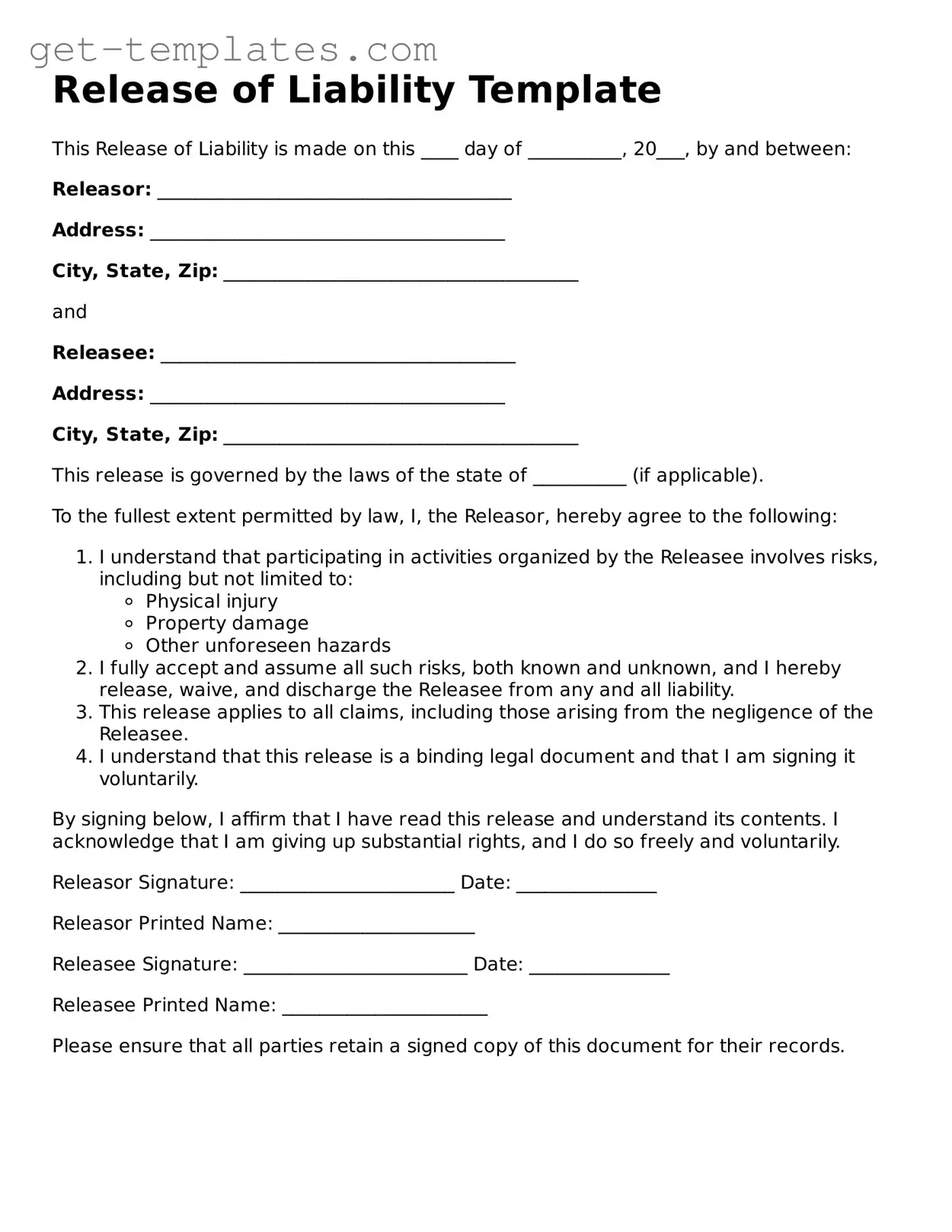Release of Liability Template
This Release of Liability is made on this ____ day of __________, 20___, by and between:
Releasor: ______________________________________
Address: ______________________________________
City, State, Zip: ______________________________________
and
Releasee: ______________________________________
Address: ______________________________________
City, State, Zip: ______________________________________
This release is governed by the laws of the state of __________ (if applicable).
To the fullest extent permitted by law, I, the Releasor, hereby agree to the following:
- I understand that participating in activities organized by the Releasee involves risks, including but not limited to:
- Physical injury
- Property damage
- Other unforeseen hazards
- I fully accept and assume all such risks, both known and unknown, and I hereby release, waive, and discharge the Releasee from any and all liability.
- This release applies to all claims, including those arising from the negligence of the Releasee.
- I understand that this release is a binding legal document and that I am signing it voluntarily.
By signing below, I affirm that I have read this release and understand its contents. I acknowledge that I am giving up substantial rights, and I do so freely and voluntarily.
Releasor Signature: _______________________ Date: _______________
Releasor Printed Name: _____________________
Releasee Signature: ________________________ Date: _______________
Releasee Printed Name: ______________________
Please ensure that all parties retain a signed copy of this document for their records.
